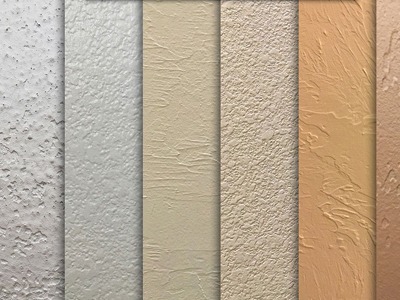CALL TODAY! → (321) 239-5083
Transform Your Space with Drywall Texturing Services: Styles, Benefits, and Use Cases
Give your walls personality. Explore the most popular drywall textures and how they can add style and depth to your home or business.
7/12/20255 min read


Understanding Drywall Texturing Services
Drywall texturing services play a pivotal role in enhancing both the aesthetics and functionality of interior environments, whether residential or commercial. Essentially, these services involve applying a layered texture to drywall surfaces, which can significantly alter the visual appeal and atmosphere of a space. The primary objective of drywall texturing is to hide imperfections, such as cracks, dents, or seams, providing a uniform and polished appearance. In addition, texturing can add depth and character, fundamentally transforming a plain wall into a rich, textured feature that contributes to the overall design narrative.
In Florida, where the climate can affect the integrity of interior surfaces, employing drywall texturing techniques can be especially advantageous. Different textures not only enhance beauty but also serve practical purposes in controlling the light and shadow in a room, thereby influencing the perception of space. For instance, a skip trowel or knockdown finish can diffuse light more evenly across a surface, making rooms feel larger and more inviting. Conversely, smoother textures might project a sleek, modern aesthetic that aligns beautifully with contemporary design themes.
Moreover, drywall textures can significantly improve the acoustics of a room. The diverse surfaces created through texturing can help in sound absorption, thereby minimizing echoes and enhancing privacy in bustling environments such as offices or shared living spaces. Given the variety of styles available—from subtle to bold—drywall texturing services offer nearly limitless possibilities for personalization, making them an essential consideration for anyone looking to elevate their interiors. This versatility, combined with their functional benefits, positions drywall texturing as a valuable service in the realm of interior design.
Popular Texture Styles: Knockdown, Orange Peel, and Custom Patterns
When it comes to drywall texturing, several styles stand out for their aesthetic appeal and functional benefits. Among these, the knockdown and orange peel textures are particularly favored due to their distinctive finishes and ability to effectively conceal imperfections.
Knockdown texture is created by applying a joint compound to the drywall surface and then "knocking down" the peaks created by a trowel after a brief drying period. This results in a soft, flattened pattern that offers dimension while simultaneously hiding minor flaws in walls and ceilings. The visual impact of knockdown is subtle yet sophisticated; it provides a textured finish that adds depth without overwhelming the space. Additionally, its ability to absorb sound can enhance the acoustics of a room, making it an attractive option for both residential and commercial settings.
On the other hand, orange peel texture mimics the dimpled skin of an orange, hence its name. This style is achieved using a spray application, where the compound is atomized and sprayed onto the surface. The result is a fine, mottled appearance that brings a contemporary feel to a space. While the orange peel texture effectively masks faults, it also offers an easy-to-maintain surface that can withstand the rigors of daily life.
Custom patterns provide homeowners with the flexibility to create unique designs tailored to their tastes. Whether opting for swirls, waves, or geometric shapes, custom patterns can transform a mundane wall into a work of art. These textures not only enhance visual interest but also allow for playful creativity in home design.
In terms of benefits, all these texture styles serve the dual purpose of improving visual aesthetics while concealing imperfections. This functionality is essential for homeowners and designers looking to transform spaces, ensuring that they remain both stylish and practical.
Choosing the Right Texture for Different Rooms and Spaces
When it comes to transforming the aesthetic appeal of a space, the texture applied to drywall plays a crucial role. Selecting the appropriate texture for various rooms involves considering both the visual impact and the functional attributes that each choice brings. One popular option is the knockdown texture, which is ideal for living areas. This style features a slightly mottled appearance, offering an inviting and cozy ambiance, perfect for social interactions.
In contrast, for more intimate spaces such as bedrooms or private offices, the orange peel texture might be the favored choice. This texture creates a subtle and smooth finish that can make a room feel more serene and peaceful, promoting relaxation and focus. Additionally, its soft texture can camouflage minor imperfections, which is a significant advantage in personal spaces.
Another important factor to consider is the maintenance required for each texture type. For instance, the knockdown texture may require more careful cleaning techniques to retain its aesthetic, as dirt and dust can accumulate in the crevices. On the other hand, the orange peel texture’s relatively smoother surface can be easier to wipe down, making it a practical option for frequently used spaces.
Durability is also a vital consideration, especially in high-traffic areas such as hallways or commercial settings. Textures that provide robust surfaces are essential in these instances to withstand wear and tear while maintaining their visual appeal. Therefore, understanding the specific needs of each room in your home or business will guide your decision, enabling you to choose textures that not only enhance the beauty of your spaces but also align with their intended functionality.
Case Studies: Drywall Texturing in Homes and Businesses
Drywall texturing has become a popular technique used to enhance the aesthetics and functionality of various spaces, both residential and commercial. By examining specific case studies, we can better understand the transformative power of drywall texturing services. These examples show how such services can adapt to different design needs while also contributing to the overall ambiance of a space.
In a residential setting, a family in a modern suburban home opted for a knockdown texture in their living room. This specific texture, which combines a unique aesthetic with practical benefits, helped to conceal imperfections in the drywall while adding visual interest. The knockdown texture also facilitated a cozy, inviting atmosphere, making the space conducive for family gatherings. Additionally, the texture's unique shadowing effect provided depth, adding character to the otherwise plain walls.
In a contrasting commercial environment, a bustling restaurant utilized a stucco texture on its walls to create a vibrant and rustic atmosphere that resonated with their brand identity. This choice not only enhanced appeal but also provided functional benefits by effectively absorbing sound, contributing to a pleasant dining experience. The textured walls allowed for easy maintenance, which is crucial in high-traffic spaces where spills and wear are more common.
Retail shops have also tapped into the advantages of drywall texturing services. For instance, a boutique clothing store chose a sand swirl texture to give its walls a sophisticated yet whimsical flair. This choice not only distinguished the store from competitors but also served a purpose by effectively highlighting the merchandise displayed against it. The texture played a key role in creating an engaging shopping experience, encouraging customers to linger and explore.
Through these case studies, it is evident that drywall texturing services can significantly impact both homes and businesses, addressing specific design needs while enhancing the overall environment. As such, considering drywall texturing as part of any renovation or build project can lead to remarkable improvements in aesthetic appeal and functionality.
FOLLOW US ON SOCIAL MEDIA
SUBSCRIBE TO OUR NEWSLETTER
CALL:
HOURS:
Available 24/7
COPYRIGHT © 2025 KING DRYWALL SERVICES LLC.


